February 20
Regulatory sequences donated by transposable elements (TEs) contribute to human evolution. A team from NIH reached this conclusion after examining TE-derived sequences in regulatory regions of the human genome. Their report begins, "Fully 45% of the human genome draft sequence is composed of transposable element (TE) derived sequences (compared with ~1% dedicated to protein-coding sequences), and this figure is certainly an underestimate, because many TE sequences will have evolved beyond recognition...." Of the 2,004 promoter sequences they analyzed, 475 (~24%) were found to contain TE-derived sequences. Abundant TEs were also found in other types of regulatory sequences such as untranslated mRNA, and scaffold/matrix attachment regions (S/MARs). They conclude, "Here, we demonstrate the potential of TEs to affect substantially the regulation of thousands of human genes.... In addition..., TEs appear to affect regulation of the human genome in a more global manner...."
Unlike Darwinism, cosmic ancestry holds that new genetic programs are acquired in a genetically open system and installed with the help of recombination, DNA repair and other genetic mechanisms. TEs that supply regulatory sequences, as in this report, are more consistent with the latter theory, we suggest.
 I. King Jordan, et al. "Origin of a substantial fraction of human regulatory sequences from transposable elements"
[abstract], doi:10.1016/S0168-9525(02)00006-9, p 68-72 v 19, Trends in Genetics, Feb 2003.
I. King Jordan, et al. "Origin of a substantial fraction of human regulatory sequences from transposable elements"
[abstract], doi:10.1016/S0168-9525(02)00006-9, p 68-72 v 19, Trends in Genetics, Feb 2003.
 Viruses... is a CA webpage about horizontal gene transfer and related phenomena. [Next-What'sNEW about HGT-Prev]
Viruses... is a CA webpage about horizontal gene transfer and related phenomena. [Next-What'sNEW about HGT-Prev]
February 18
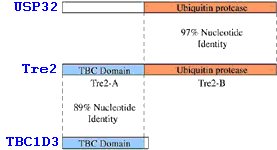 Humanoid gene arose abruptly? That's the observation of Harvard Medical School's Charles A. Paulding and his colleagues who set out to trace the evolution of a gene possessed by humans but not mice and other mammals. The team determined that Tre2 was a hybrid of two different genes, one evolutionarily ancient and the other present only in primates that are closely related to humans. They suspect the two genes fused between 21 and 33 million years ago. Genes that arise "abruptly" with new functions are not explained by the Darwinian theory, but they are the norm in cosmic ancestry.
Humanoid gene arose abruptly? That's the observation of Harvard Medical School's Charles A. Paulding and his colleagues who set out to trace the evolution of a gene possessed by humans but not mice and other mammals. The team determined that Tre2 was a hybrid of two different genes, one evolutionarily ancient and the other present only in primates that are closely related to humans. They suspect the two genes fused between 21 and 33 million years ago. Genes that arise "abruptly" with new functions are not explained by the Darwinian theory, but they are the norm in cosmic ancestry.
 Charles A. Paulding et al., "The Tre2 (USP6) oncogene is a hominoid-specific gene" [abstract], p 2507-2511 v 100, Proc. Nat. Acad. Sci. USA, 4 March 2003.
Charles A. Paulding et al., "The Tre2 (USP6) oncogene is a hominoid-specific gene" [abstract], p 2507-2511 v 100, Proc. Nat. Acad. Sci. USA, 4 March 2003.
 Researchers Identify Gene Unique to Humans and Their Ape Kin, Scientific American, 18 Feb 2003.
Researchers Identify Gene Unique to Humans and Their Ape Kin, Scientific American, 18 Feb 2003.
 Human Genome Search at University of Oklahoma is a related CA webpage.
Human Genome Search at University of Oklahoma is a related CA webpage.
 New genetic programs in Darwinism and strong panspermia is a related CA webpage.
New genetic programs in Darwinism and strong panspermia is a related CA webpage.
 Testing Darwinism versus Cosmic Ancestry explains why abruptly created genes are un-darwinian.
Testing Darwinism versus Cosmic Ancestry explains why abruptly created genes are un-darwinian.
 Viruses... is a CA webpage about horizontal gene transfer and related phenomena. [Next-What'sNEW about HGT-Prev]
Viruses... is a CA webpage about horizontal gene transfer and related phenomena. [Next-What'sNEW about HGT-Prev]
February 12
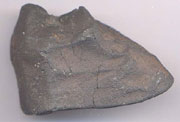 Amino acids in the Murchison meteorite are reviewed in Astrobiology Magazine online, with opinions of opposing experts. Everyone agrees that meteorites on the ground are easily contaminated, but various lines of evidence such as unearthly isotope ratios, the extent of racemization, the presence of unearthly amino acids and the absence of some earthly ones make the case for extraterrestrial biology hard to simply dismiss.
Amino acids in the Murchison meteorite are reviewed in Astrobiology Magazine online, with opinions of opposing experts. Everyone agrees that meteorites on the ground are easily contaminated, but various lines of evidence such as unearthly isotope ratios, the extent of racemization, the presence of unearthly amino acids and the absence of some earthly ones make the case for extraterrestrial biology hard to simply dismiss.
 Murchison's Amino Acids: Tainted Evidence?, by Anne M. Rosenthal, Astrobiology Magazine, 12 Feb 2003.
Murchison's Amino Acids: Tainted Evidence?, by Anne M. Rosenthal, Astrobiology Magazine, 12 Feb 2003.
 Amino Acid Asymmetry in the Murchison Meteorite is a related CA webpage.
Amino Acid Asymmetry in the Murchison Meteorite is a related CA webpage.
February 12
Martian network of streams, rivers and lakes...
 ...How Water May Have Flowed on Ancient Mars, NASA Ames Research Center, 12 Feb 2003.
...How Water May Have Flowed on Ancient Mars, NASA Ames Research Center, 12 Feb 2003.
 Mars Lakes — images from NASA Ames Research Center, 12 Feb 2003.
Mars Lakes — images from NASA Ames Research Center, 12 Feb 2003.
 Ankle-deep on Mars, by Jonathan Amos, BBC News Online, 16 Feb 2003.
Ankle-deep on Mars, by Jonathan Amos, BBC News Online, 16 Feb 2003.
February 5
 Small gullies on Mars caused by water? Recent high-resolution pictures taken by the orbiting Mars Global Surveyor robot spacecraft show gullies like these seen inside Newton Basin. The resemblance to gullies caused by water on Earth is striking. The accompanying picture width spans about 1500 meters on Mars, so the longest dark gully is approximately 1000 meters long. [Thanks, Larry Klaes. Photo by Malin Space Science Systems, MGS, JPL, NASA.]
Small gullies on Mars caused by water? Recent high-resolution pictures taken by the orbiting Mars Global Surveyor robot spacecraft show gullies like these seen inside Newton Basin. The resemblance to gullies caused by water on Earth is striking. The accompanying picture width spans about 1500 meters on Mars, so the longest dark gully is approximately 1000 meters long. [Thanks, Larry Klaes. Photo by Malin Space Science Systems, MGS, JPL, NASA.]
 Unusual Gullies and Channels on Mars, Astronomy Picture of the Day, 5 Feb 2003.
Unusual Gullies and Channels on Mars, Astronomy Picture of the Day, 5 Feb 2003.
 Life on Mars! is a related CA webpage.
Life on Mars! is a related CA webpage.
February 4
The latest results from a closed-system biological experiment are published. We have argued that closed-system experiments are the only way to confirm that darwinian evolution is able to produce sustained evolutionary progress. This series by Michigan State's Richard Lenski and his affiliates is the best one of which we are aware — it has run for well over a decade. Now they report that 20,000 generations of Escherichia coli demonstrate "the utility of expression arrays for addressing evolutionary issues including the quantitative measurement of parallel evolution in independent lineages and the identification of beneficial mutations." We applaud the use of expression arrays and we agree that mutations can sometimes be beneficial. But we still await evidence of sustained evolutionary progress in a closed system. Without such evidence, we suspect that sustained evolutionary progress requires the acquisition of new genetic programs in an open system.
 Tim F. Cooper, Daniel E. Rozen, and Richard E. Lenski, "Parallel changes in gene expression after 20,000 generations of evolution in Escherichia coli" [abstract], p 1072-1077 v 100 n 3, Proc. Nat. Acad. Sci. USA, 4 Feb 2003.
Tim F. Cooper, Daniel E. Rozen, and Richard E. Lenski, "Parallel changes in gene expression after 20,000 generations of evolution in Escherichia coli" [abstract], p 1072-1077 v 100 n 3, Proc. Nat. Acad. Sci. USA, 4 Feb 2003.
 A recent issue..., 15 July 99, is a related CA WhatsNEW item about Lenski's experiments.
A recent issue..., 15 July 99, is a related CA WhatsNEW item about Lenski's experiments.
 ...Is Evolutionary Progress in a Closed System Possible? is a related CA webpage with a separate What'sNEW section, Lenski et al..
...Is Evolutionary Progress in a Closed System Possible? is a related CA webpage with a separate What'sNEW section, Lenski et al..
 Is Sustained Macroevolutionary Progress Possible? is a related CA webpage.
Is Sustained Macroevolutionary Progress Possible? is a related CA webpage.
 Macroevolutionary Progress Redefined... is a related CA webpage.
Macroevolutionary Progress Redefined... is a related CA webpage.
 Testing Darwinism versus Cosmic Ancestry is a related CA webpage.
Testing Darwinism versus Cosmic Ancestry is a related CA webpage.
February 2
 A two-day symposium organised by the UK Astrobiology Forum will be held 27-28 March 2003, in Cambridge, to "provide an opportunity for the UK Astrobiology Community to gather and discuss topics of mutual interest. The first day ...will be a general day of astrobiological talks ranging from astrobiological robotics to the effects of asteroid and comet impacts on the Earth's environment.... The second day will be a specialist day focusing on 'The early Earth - conditions for the emergence and radiation of life'."
A two-day symposium organised by the UK Astrobiology Forum will be held 27-28 March 2003, in Cambridge, to "provide an opportunity for the UK Astrobiology Community to gather and discuss topics of mutual interest. The first day ...will be a general day of astrobiological talks ranging from astrobiological robotics to the effects of asteroid and comet impacts on the Earth's environment.... The second day will be a specialist day focusing on 'The early Earth - conditions for the emergence and radiation of life'."
 UK Astrobiology 2003 — conference homepage.
UK Astrobiology 2003 — conference homepage.
February 1
Space shuttle destroyed on reentry. Radio contact was lost at 9:00 AM EST as Columbia approached its 9:16 AM scheduled landing at Kennedy Space Center, Florida. The shuttle apparently broke apart over Texas at an altitude of 60 kilometers. The seven-person crew is feared lost.
 Evelyn Rusli, "Research lost on Columbia shuttle," Daily Princetonian, 7 Feb 2003.
Evelyn Rusli, "Research lost on Columbia shuttle," Daily Princetonian, 7 Feb 2003.
January 29
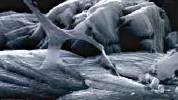 A discussion of panspermia arises from a biological experiment aboard the Space Shuttle. The experiment exposes sterile starting materials to bacteria in the harsh conditions of deep space, and will test for evidence that biofilms have formed. Structures resembling fossilized biofilms were noticed in the Mars meteorite ALH84001, and a comparison with the new results may be instructive. The "panspermia experiment" is a collaboration between Tariq Adwan, a Palestinian biology student from Bethlehem, and Yuval Landau, an Israeli medical student from Tel Aviv. The discussion with National Astrobiology Institute Associate David Warmflash and Hayden Planetarium Director Neil deGrasse Tyson mentions various implications if life is found elsewhere. It confirms that modern panspermia has become a respectable, mainstream hypothesis.
A discussion of panspermia arises from a biological experiment aboard the Space Shuttle. The experiment exposes sterile starting materials to bacteria in the harsh conditions of deep space, and will test for evidence that biofilms have formed. Structures resembling fossilized biofilms were noticed in the Mars meteorite ALH84001, and a comparison with the new results may be instructive. The "panspermia experiment" is a collaboration between Tariq Adwan, a Palestinian biology student from Bethlehem, and Yuval Landau, an Israeli medical student from Tel Aviv. The discussion with National Astrobiology Institute Associate David Warmflash and Hayden Planetarium Director Neil deGrasse Tyson mentions various implications if life is found elsewhere. It confirms that modern panspermia has become a respectable, mainstream hypothesis.
 Hitch-Hiker's Guide to Biology's Second Datum, Astrobiology Magazine, 29 Jan 2003.
Hitch-Hiker's Guide to Biology's Second Datum, Astrobiology Magazine, 29 Jan 2003.
 Introduction... is a related CA webpage.
Introduction... is a related CA webpage.
 Life on Mars! is a related CA webpage about ALH84001 and the implications of life elsewhere.
Life on Mars! is a related CA webpage about ALH84001 and the implications of life elsewhere.
January 28
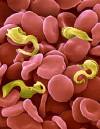 Trypanosomes got genes from plants. Their ancestors probably merged with a type of green algae more than a billion years ago, and subsequently lost the organelles but retained numerous genes. So far, biologists from Belgium and Brazil have found 16 genes in the microbe that have their closest relatives in plants. They suspect that more wait to be discovered. [Thanks, Hans-Peter Wheeler.]
Trypanosomes got genes from plants. Their ancestors probably merged with a type of green algae more than a billion years ago, and subsequently lost the organelles but retained numerous genes. So far, biologists from Belgium and Brazil have found 16 genes in the microbe that have their closest relatives in plants. They suspect that more wait to be discovered. [Thanks, Hans-Peter Wheeler.]
 Véronique Hannaert, et al., "Plant-like traits associated with metabolism of Trypanosoma parasites" [abstract], p 1067-1071 v 100 n 3, Proc. Nat. Acad. Sci. USA, 4 Feb 2003.
Véronique Hannaert, et al., "Plant-like traits associated with metabolism of Trypanosoma parasites" [abstract], p 1067-1071 v 100 n 3, Proc. Nat. Acad. Sci. USA, 4 Feb 2003.
 Sleeping sickness bug swallowed a plant, by John Whitfield, Nature News Service, 28 Jan 2003.
Sleeping sickness bug swallowed a plant, by John Whitfield, Nature News Service, 28 Jan 2003.
 Viruses... is a CA webpage about horizontal gene transfer. [Next-What'sNEW about HGT-Prev]
Viruses... is a CA webpage about horizontal gene transfer. [Next-What'sNEW about HGT-Prev]
January 27
 NASA Astrobiology Institute holds its General Meeting next month at Arizona State University in Tempe. The book of abstracts is available online.
NASA Astrobiology Institute holds its General Meeting next month at Arizona State University in Tempe. The book of abstracts is available online.
 General Meeting of the NASA Astrobiology Institute, 10-12 February 2003 — conference homepage.
General Meeting of the NASA Astrobiology Institute, 10-12 February 2003 — conference homepage.
 NASA Astrobiology Institute to Host General Meeting Feb. 10-12, Release 03-09AR by Kathleen Burton, NASA Ames Research Center, 30 Jan 2003.
NASA Astrobiology Institute to Host General Meeting Feb. 10-12, Release 03-09AR by Kathleen Burton, NASA Ames Research Center, 30 Jan 2003.
 NAI General Meeting — abstracts in pdf (6 megabytes).
NAI General Meeting — abstracts in pdf (6 megabytes).
January 26
"Evolving Inventions" is the title of an article in the latest Scientific American about the power of computers to mimic biological evolution. John Koza, Martin Keane and Matthew Streeter write that computers have invented patentable electronic circuits using a process called "genetic programming." In other experiments, beginning with "a primordial ooze of randomly generated trial 'organisms'," they claim to have observed lifelike evolutionary progress. They write, "The exploitation of small differences in fitness yields major improvement over many generations in much the same way that a small interest rate yields large growth when compounded over decades." The article opens with a futuristic two-page color image showing a glowing cluster of translucent trumpet bells emerging from an electronic sea in four steps.
One could easily get the impression that this computer model dramatically demonstrates lifelike evolutionary progress. It doesn't. The model demonstrates only this: when given a clearly defined problem and a toolkit of appropriate algorithms, genetic programming can find solutions that people without computers would never consider. Once the computer has solved its given problem, the process is finished. Sure, the story is noteworthy and genetic programming appears to be useful. But to mimic the mainstream account of biological evolution the model must demonstrate not just permutation and selection, but sustainable, nonteleological evolutionary progress. This model does nothing like that. We wish that Scientific American were more careful not to mislead us.
 John R. Koza et al., "Evolving Inventions" [intro], p 52-59 v 288 n 2, Scientific American, February 2003.
John R. Koza et al., "Evolving Inventions" [intro], p 52-59 v 288 n 2, Scientific American, February 2003.
 Can Computers Mimic... Evolution? is a related CA webpage with more about Koza.
Can Computers Mimic... Evolution? is a related CA webpage with more about Koza.
 ...Is Evolutionary Progress in a Closed System Possible? has a related What'sNEW section, Lenski et al..
...Is Evolutionary Progress in a Closed System Possible? has a related What'sNEW section, Lenski et al..
January 23
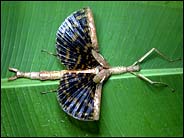 Wingless stick insects have re-evolved wings, perhaps many times, according to a phylogenetic analysis by biologists from BYU, Washington U and Georg August University, Göttingen. The new study suggests that not only wings, but also any complex characters like limbs or eyes that can be lost over evolutionary time can likewise re-evolve. When Dr. Michael F. Whiting, the lead author of the paper, first described these results to entomologists, the response was, "Impossible, impossible, impossible." The result is more comprehensible if the genetic programs for evolutionary advances like wings are acquired by gene transfer, and are conserved even when silent, as in the strong version of panspermia. [Thanks, Jerry Chancellor.]
Wingless stick insects have re-evolved wings, perhaps many times, according to a phylogenetic analysis by biologists from BYU, Washington U and Georg August University, Göttingen. The new study suggests that not only wings, but also any complex characters like limbs or eyes that can be lost over evolutionary time can likewise re-evolve. When Dr. Michael F. Whiting, the lead author of the paper, first described these results to entomologists, the response was, "Impossible, impossible, impossible." The result is more comprehensible if the genetic programs for evolutionary advances like wings are acquired by gene transfer, and are conserved even when silent, as in the strong version of panspermia. [Thanks, Jerry Chancellor.]
 Michael F. Whiting et al., "Loss and recovery of wings in stick insects" [abstract], p 264-267 v 421, Nature, 16 Jan 2003.
Michael F. Whiting et al., "Loss and recovery of wings in stick insects" [abstract], p 264-267 v 421, Nature, 16 Jan 2003.
 Walking sticks lost wings, then re-evolved them, Brigham Young University via EurekAlert, 15 Jan 2003.
Walking sticks lost wings, then re-evolved them, Brigham Young University via EurekAlert, 15 Jan 2003.
 Fickle Evolution: Winged, to Wingless, to Winged, by Carol Kaesuk Yoon, The New York Times, 21 Jan 2003.
Fickle Evolution: Winged, to Wingless, to Winged, by Carol Kaesuk Yoon, The New York Times, 21 Jan 2003.
 Neo-Darwinism... is a related CA webpage with a section about Convergent Evolution.
Neo-Darwinism... is a related CA webpage with a section about Convergent Evolution.
 Viruses and Other Gene Transfer Mechanisms is a related CA webpage. [Next-What'sNEW about HGT-Prev]
Viruses and Other Gene Transfer Mechanisms is a related CA webpage. [Next-What'sNEW about HGT-Prev]
 Why Sexual Reproduction? describes gene conversion, a system that can conserve silent programs.
Why Sexual Reproduction? describes gene conversion, a system that can conserve silent programs.
January 21
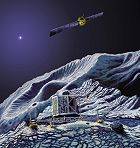 Rosetta Update: Rosetta's Project Scientist, Gerhard Schwehm, says, "During the decade it has taken us to develop and build Rosetta, we have faced many challenges and overcome them all. This new challenge will be met with the same energy, enthusiasm and, ultimately, success." [Thanks, Larry Klaes.]
Rosetta Update: Rosetta's Project Scientist, Gerhard Schwehm, says, "During the decade it has taken us to develop and build Rosetta, we have faced many challenges and overcome them all. This new challenge will be met with the same energy, enthusiasm and, ultimately, success." [Thanks, Larry Klaes.]
 ESA's new challenge with Rosetta, European Space Agency, 21 Jan 2003.
ESA's new challenge with Rosetta, European Space Agency, 21 Jan 2003.
 Comets Rendezvous is a related section of the CA webpage Can the Theory Be Tested?.
Comets Rendezvous is a related section of the CA webpage Can the Theory Be Tested?.
January 17
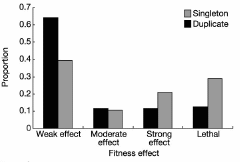 Duplicated genes serve backup functions. An interdisciplinary team reached this conclusion by studying Saccharomyces cerevisiae, a yeast whose genome was sequenced six years ago. Gu and Steinmetz's group knocked out duplicated genes, one at a time, to test the fitness result for the yeast. They observed that most duplicated genes can substitute for their knocked-out partners, because they retain their original functions even after substantial mutation.
Duplicated genes serve backup functions. An interdisciplinary team reached this conclusion by studying Saccharomyces cerevisiae, a yeast whose genome was sequenced six years ago. Gu and Steinmetz's group knocked out duplicated genes, one at a time, to test the fitness result for the yeast. They observed that most duplicated genes can substitute for their knocked-out partners, because they retain their original functions even after substantial mutation.Heretofore, following Susumu Ohno, evolutionary biologists thought that the main benefit of gene duplication was to provide silent genes able to undergo mutations and acquire new functions. But this study prompts evolutionary biologist Axel Meyer to wonder, "Are duplicated genes the stuff of developmental stability and of conservation of function rather than evolutionary innovation? If so, how did the diversity of life around us appear?" He concludes, "More needs to be learned ...before this question can be answered."
 Zhenglong Gu et al., "Role of duplicate genes in genetic robustness against null mutations" [abstract], p 63-66 v 421, Nature, 2 Jan 2003.
Zhenglong Gu et al., "Role of duplicate genes in genetic robustness against null mutations" [abstract], p 63-66 v 421, Nature, 2 Jan 2003.
 Axel Meyer, "Duplication, duplication" [text], p 31-32 v 421, Nature, 2 Jan 2003.
Axel Meyer, "Duplication, duplication" [text], p 31-32 v 421, Nature, 2 Jan 2003.
 Magdalena Skipper, "Compensation or innovation" [text], p 80 v 4 n 2, Nature Reviews Genetics, Feb 2003.
Magdalena Skipper, "Compensation or innovation" [text], p 80 v 4 n 2, Nature Reviews Genetics, Feb 2003.
 Can Computers Mimic... Evolution? is a CA webpage that discusses Ohno's theory.
Can Computers Mimic... Evolution? is a CA webpage that discusses Ohno's theory.
 Duplication Makes a New Primate Gene is a new CA webpage with relevant links, posted 21 Feb 2005.
Duplication Makes a New Primate Gene is a new CA webpage with relevant links, posted 21 Feb 2005.
January 17
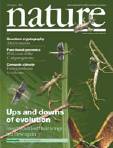 Horizontal gene transfer — "In the early days of molecular phylogenetics (the mid-1960s to the early 1990s), it was thought that sequencing was the path to enlightenment — more sequences of more genes could only improve the depth and resolution of our knowledge of life's history. But instead, our 100-genome world is riven by seemingly irreconcilable conflicts; ambiguities and discrepancies are the norm, rather than the exception. Some of modern biology's fundamental tenets — notably the darwinian-mendelian model of parent-to-offspring ('vertical') gene flow — have once again, at least for microbes, been thrown into doubt. Lateral (horizontal) gene flow — in which genes are transmitted across, rather than along, branches in family trees — is no longer an explanation of last resort, but a competitive model for the origin of microbial biodiversity." A paradigm shift is under way here.
Horizontal gene transfer — "In the early days of molecular phylogenetics (the mid-1960s to the early 1990s), it was thought that sequencing was the path to enlightenment — more sequences of more genes could only improve the depth and resolution of our knowledge of life's history. But instead, our 100-genome world is riven by seemingly irreconcilable conflicts; ambiguities and discrepancies are the norm, rather than the exception. Some of modern biology's fundamental tenets — notably the darwinian-mendelian model of parent-to-offspring ('vertical') gene flow — have once again, at least for microbes, been thrown into doubt. Lateral (horizontal) gene flow — in which genes are transmitted across, rather than along, branches in family trees — is no longer an explanation of last resort, but a competitive model for the origin of microbial biodiversity." A paradigm shift is under way here.
 Robert L. Charlebois et al., "Microbial phylogenomics: Branching out" [text], p 217 v 421, Nature, 16 Jan 2003.
Robert L. Charlebois et al., "Microbial phylogenomics: Branching out" [text], p 217 v 421, Nature, 16 Jan 2003.
 Viruses... is a CA webpage about horizontal gene transfer. [Next-What'sNEW about HGT-Prev]
Viruses... is a CA webpage about horizontal gene transfer. [Next-What'sNEW about HGT-Prev]
January 14
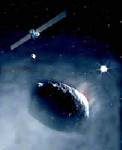 Rosetta cancelled. The mission to rendezvous with comet Wirtanen in 2011 will not fly this month because its launch vehicle appears unreliable. Rosetta was scheduled for launch on 12 January, but on 11 December an Ariane 5 rocket like the one that would have carried it into space malfunctioned and was destroyed seven minutes after liftoff. The launch window for Wirtanen closes on 30 January, too soon to re-certify the Ariane 5. It may be possible to aim Rosetta at another comet, later.
Rosetta cancelled. The mission to rendezvous with comet Wirtanen in 2011 will not fly this month because its launch vehicle appears unreliable. Rosetta was scheduled for launch on 12 January, but on 11 December an Ariane 5 rocket like the one that would have carried it into space malfunctioned and was destroyed seven minutes after liftoff. The launch window for Wirtanen closes on 30 January, too soon to re-certify the Ariane 5. It may be possible to aim Rosetta at another comet, later.
 ...Initial information on Flight 157, Arianespace, 12 Dec 2002.
...Initial information on Flight 157, Arianespace, 12 Dec 2002.
 Rosetta launch postponed, ESA Media Relations, 14 Jan 2003.
Rosetta launch postponed, ESA Media Relations, 14 Jan 2003.
 Comet landing mission called off, NewScientist.com, 14 Jan 2003.
Comet landing mission called off, NewScientist.com, 14 Jan 2003.
 Rosetta loses launch window..., #247, The Cosmic Mirror by Daniel Fischer, 15 Jan 2003.
Rosetta loses launch window..., #247, The Cosmic Mirror by Daniel Fischer, 15 Jan 2003.
 European Space Agency Delays Rosetta Launch a Year, by Jean-Michel Belot, Reuters, 15 Jan 2003.
European Space Agency Delays Rosetta Launch a Year, by Jean-Michel Belot, Reuters, 15 Jan 2003.
 Declan Butler, "Safety doubts force rethink of embattled comet mission" [text], p 198 v 421, Nature, 16 Jan 2003.
Declan Butler, "Safety doubts force rethink of embattled comet mission" [text], p 198 v 421, Nature, 16 Jan 2003.
 Nigey Hey, "To Catch a Comet," p 22-23 v 33 n 10, Smithsonian, Jan 2003 (before mission was scrubbed).
Nigey Hey, "To Catch a Comet," p 22-23 v 33 n 10, Smithsonian, Jan 2003 (before mission was scrubbed).
 Comets Rendezvous is a related section of the CA webpage Can the Theory Be Tested?.
Comets Rendezvous is a related section of the CA webpage Can the Theory Be Tested?.
January 10
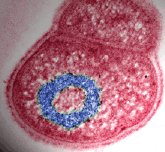 How a hardy bacterium resists radiation has apparently been discovered by an international team of biologists. Deinococcus radiodurans is capable of surviving doses of radiation 1500 times as great as would be lethal to most other organisms — the radiation completely shatters DNA. Homologous recombination, the only known mechanism for high-fidelity repair of double-strand breaks, is incapable of repairing damage so extensive. This team shows that the D. radiodurans genome stays tightly coiled. They propose that this packaging permits the error-free joining of DNA breaks without the usual dependence on templates.
How a hardy bacterium resists radiation has apparently been discovered by an international team of biologists. Deinococcus radiodurans is capable of surviving doses of radiation 1500 times as great as would be lethal to most other organisms — the radiation completely shatters DNA. Homologous recombination, the only known mechanism for high-fidelity repair of double-strand breaks, is incapable of repairing damage so extensive. This team shows that the D. radiodurans genome stays tightly coiled. They propose that this packaging permits the error-free joining of DNA breaks without the usual dependence on templates.
 Smadar Levin-Zaidman et al., "Ringlike Structure of the Deinococcus radiodurans Genome: A Key to Radioresistance?" [abstract], p 254-256 v 299 Science, 10 Jan 2003.
Smadar Levin-Zaidman et al., "Ringlike Structure of the Deinococcus radiodurans Genome: A Key to Radioresistance?" [abstract], p 254-256 v 299 Science, 10 Jan 2003.
 Radiation-resistant organism reveals its defense strategies, EurekAlert!, 9 Jan 2003. Original source: Weizmann Institute of Science, 10 Jan 2003.
Radiation-resistant organism reveals its defense strategies, EurekAlert!, 9 Jan 2003. Original source: Weizmann Institute of Science, 10 Jan 2003.
 Bacteria... is a related CA webpage.
Bacteria... is a related CA webpage.
January 9
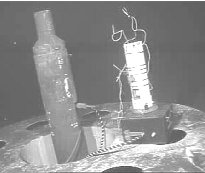 Microbes in ancient ocean crust — Oceanographers report that fluid collected from an overpressured 300-meter-deep borehole in 3.5-million-year-old ocean crust supports a microbial population as dense as that of bottom seawater but different from it. Relative to nearby near-bottom seawater, the borehole fluids are distinctly depleted or enriched in a variety of solutes. In the samples, "Ribosomal RNA gene sequence data indicate the presence of diverse Bacteria and Archaea, including gene clones of varying degrees of relatedness to known nitrate reducers..., thermophilic sulfate reducers, and thermophilic fermentative heterotrophs." It appears that "life in the ocean crust is not limited to high-flow hydrothermal systems within new ocean crust, but also extends to low-flow older crust of the midocean ridge flanks."
Microbes in ancient ocean crust — Oceanographers report that fluid collected from an overpressured 300-meter-deep borehole in 3.5-million-year-old ocean crust supports a microbial population as dense as that of bottom seawater but different from it. Relative to nearby near-bottom seawater, the borehole fluids are distinctly depleted or enriched in a variety of solutes. In the samples, "Ribosomal RNA gene sequence data indicate the presence of diverse Bacteria and Archaea, including gene clones of varying degrees of relatedness to known nitrate reducers..., thermophilic sulfate reducers, and thermophilic fermentative heterotrophs." It appears that "life in the ocean crust is not limited to high-flow hydrothermal systems within new ocean crust, but also extends to low-flow older crust of the midocean ridge flanks."
 James P. Cowen et al., "Fluids from Aging Ocean Crust That Support Microbial Life" [abstract], p 120-123 v 299 Science, 3 Jan 2003.
James P. Cowen et al., "Fluids from Aging Ocean Crust That Support Microbial Life" [abstract], p 120-123 v 299 Science, 3 Jan 2003.
 Microbes Discovered Deep in Ocean Crust, Los Angeles Times, 4 Jan 2003.
Microbes Discovered Deep in Ocean Crust, Los Angeles Times, 4 Jan 2003.
 Is this how life on Earth began? by Paul Davies, telegraph.co.uk, 21 Jan 2003.
Is this how life on Earth began? by Paul Davies, telegraph.co.uk, 21 Jan 2003.
 Bacteria... is a related CA webpage.
Bacteria... is a related CA webpage.
January 2
Microorganisms in Europa's ice? [Thanks, Larry Klaes.]
 Evidence of bacteria on Europa?, by Leslie Mullen, Astrobiology Magazine, 2 Jan 2003.
Evidence of bacteria on Europa?, by Leslie Mullen, Astrobiology Magazine, 2 Jan 2003.
 ...Life on Europa or Other Moons? is a related CA webpage.
...Life on Europa or Other Moons? is a related CA webpage.